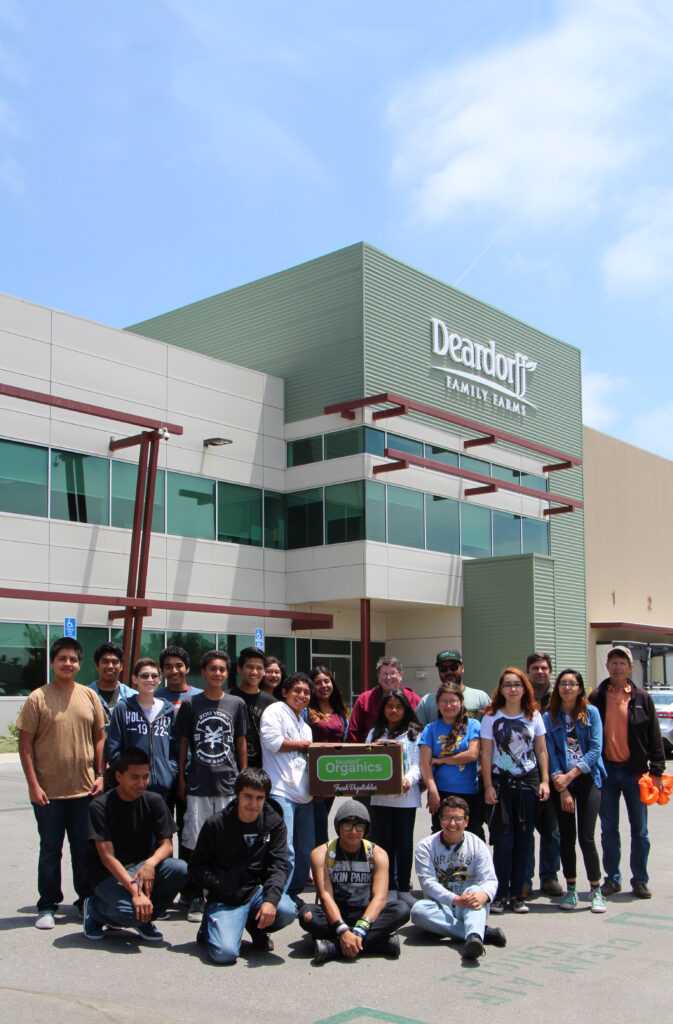What’s the difference between conventional and organic? How do you handle pests on organic farms? What are you doing to conserve water during the drought?
These are some of the questions posed during a recent field trip to Deardorff Family Farms in Oxnard, CA. Deardorff hosted a group of 10th graders from Bell Gardens High School enrolled in the GREEN (Globally Responsible Environmental Education Network) Pathway program, and their science teacher, Jan Barber-Doyle.
The GREEN Pathway’s mission is to raise community awareness of the practices of good stewardship of the earth, help students build a vision for the emerging industries surrounding green technologies, and to promote careers in such fields. Bell Gardens High School is also a recent recipient of one of Western Growers Foundation’s school garden grants.
Upon arrival at Deardorff Family Farms, we were greeted by Co-Owner Scott Deardorff and Marketing Manager Christine Smith. After the students had a chance to stretch their legs a bit, we hopped back on the bus and headed over to one of their organic ranches. We stepped off the bus to see a field of mixed greens and kale as far as the eye could see. Across the street was a conventional celery ranch. Scott explained to the students that Deardorff grows both organic and conventional produce, and he discussed both methods. He then introduced us to their organic production manager, Richard Martinez, who was accompanied by his son, Alec Martinez, who also works at Deardorff as their data analyst.
As laborers harvested kale in the background, Richard pointed out that nearly every row had a different variety planted at different stages of growth. He explained that this method of planting allows them to harvest continuously and keep up with market demand.
After Richard discussed their methods for planting and harvesting, Jan inquired about how they handle pests on an organic ranch. Richard explained that they utilize many tools on their organic fields to remedy pests. One way is through planting of sweet alyssum in the midst of their crops. The sweet smelling plant is known for attracting beneficial insects like ladybugs and lacewings that eat other destructive pests like aphids. Another way in which they combat pests is through the use of natural pesticides like fish emulsion.
In addition to pest control, the group also discussed the current drought and how that is affecting their operations. Richard showed the group the drip irrigation system in place, which helps conserve water, and Jan mentioned that they had a similar drip irrigation system in their school gardens.
Following the trip through the organic ranch, the group headed back to the Deardorff headquarters to tour their impressive LEED certified facility. Scott led the tour of their cooling, packing and shipping operations. Students got to walk through the coolers and see boxes of fresh produce stacked up two stories high. Scott described their efforts in building this green facility as a gift to their future generations. All of the decisions they made, from the kind of carpet they installed to the light bulbs used throughout the facility, had the environment in mind.
Although a large production farm and school garden may seem worlds apart, they found a common ground in their love and stewardship of the land.


